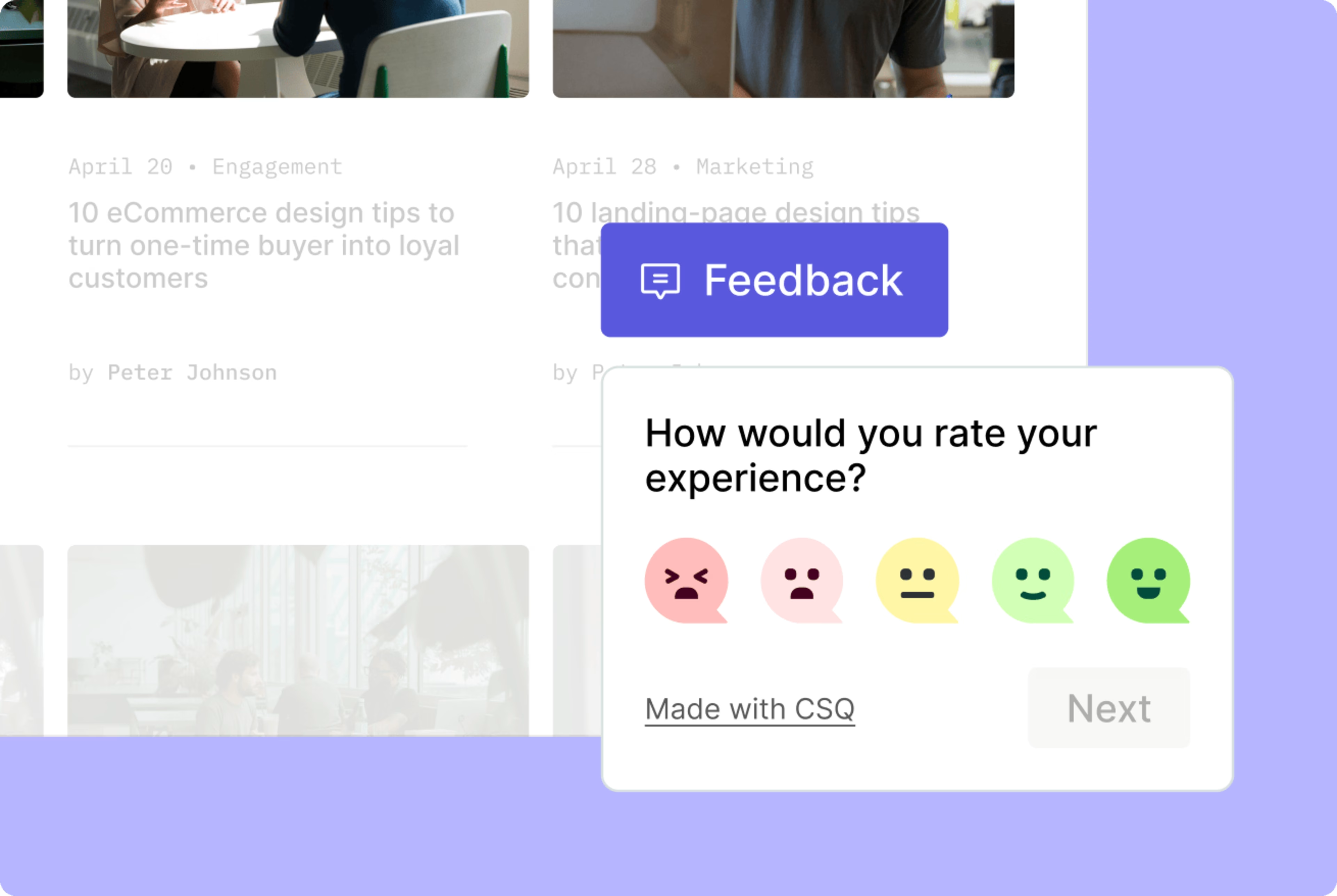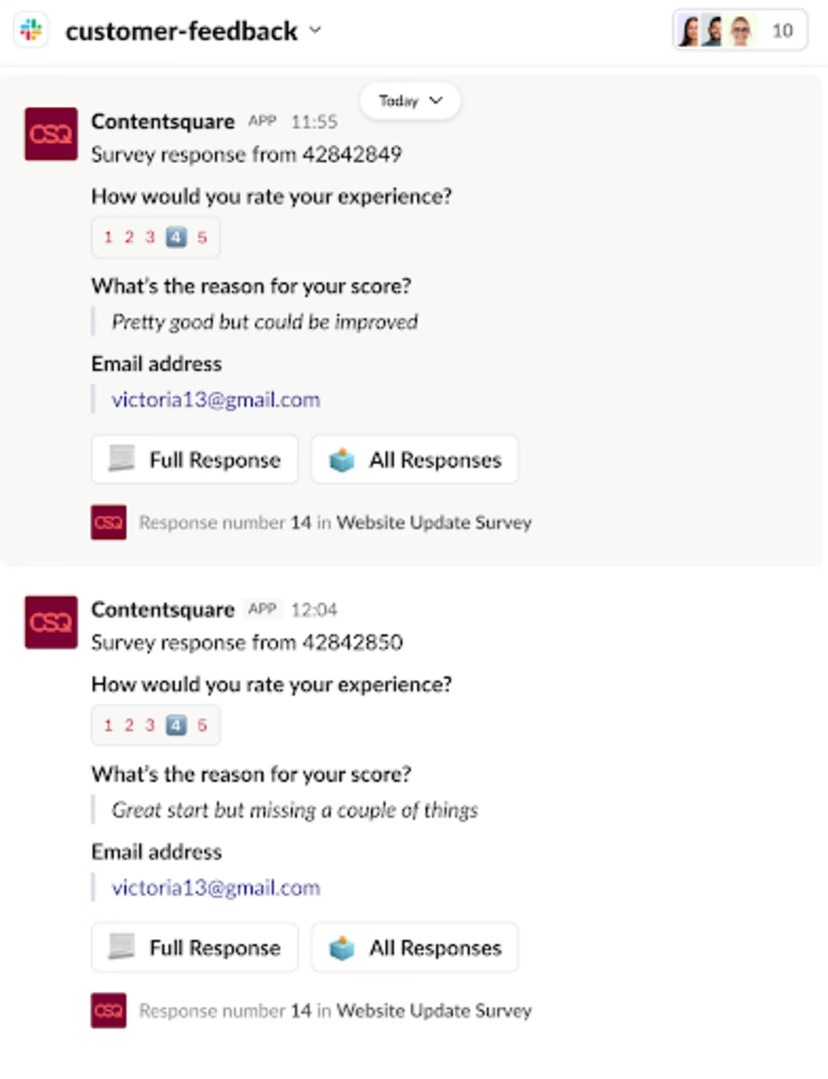Nail your product feature priorities, and users rave. Miss the mark, and they bail. It’s that simple—and that high stakes.
Smart prioritization doesn’t just delight your users; it sharpens your team’s focus, cuts down on wasted time and effort, and drives real business impact.
That’s why the best product teams don’t guess what to build next—they listen. They lean into product research instead of gut feelings or assumptions.
But here’s the kicker: turning a flood of user insights into a clear, confident roadmap? It’s messy, tricky, and even the best product researchers will tell you—it’s one of the toughest parts of the job.
That’s where this article comes in. We walk you through where features should come in during the product development process and show you how to use your research to guide feature prioritization.
The role of features in product development
Product features are the characteristics of a product that deliver value to the end-user: they enable users to get tasks done. Some features are essential to the product from ideation, but others are developed along the way—for example, a new search feature or the ability to add advanced user permissions to software.
Your product should grow and evolve according to your users' needs. Adding product features is important for retaining customers and keeping your product relevant.
💡 Pro tip: always think and communicate about product features in terms of benefits.
The harsh truth is that no one’s interested in which features your product has: they want to know how it helps them with their jobs to be done.
Don't just catalog product features—instead, link features with functions in every aspect of your product research, development, and positioning. Understanding how each feature will benefit users or stakeholders is the first step to excellent prioritization.
How do product features fit into the product development process?
There are mixed opinions on where product features should go in the product workflow. Some product experts believe that product features are examples of short-term tactics rather than long-term strategies. Here’s the difference:
Tactics are granular, day-to-day task-level plans
Strategy sets the broader product vision and direction
This school of thought says that product roadmaps should focus on the high-level product strategy and omit detailed, tactical tasks, like product features that could create confusion. Defining the roadmap comes first, then product features go on the product backlog or project management list.
In my opinion, features should only go on the product backlog, and then once the roadmap is set, they can be prioritized. Having features go up on the product roadmap before they are even unpacked would make me wary that a company could have a disconnect between its strategic and operational aspects.
But other product experts argue that product features often serve a strategic function. Imagine that part of your product vision is to get larger enterprises to use your product. Adding features that support this broader objective—like advanced user permissions that meet enterprise-level requirements—could be considered part of the product strategy.
In these cases, some product experts endorse adding strategic product features to the roadmap to illustrate how the product will answer user needs and achieve the organization’s larger vision.
Ultimately, where features go in the product development process depends on your company's goals and vision.
If you have high confidence that implementing a product feature can lift a core KPI, such as revenue, it should go on the strategic product roadmap. If there is more uncertainty around the payoff or the effort still needs to be sized up, it should go on the product backlog.
Why you should use research to prioritize product features
Whether your product features are on the roadmap or backlog—or both—you’ll need to make clear decisions around which features to work on first.
Making strong feature prioritization decisions ensures your product will delight customers and meet business goals. It also allows you to convince stakeholders that it’s worth investing organizational resources in certain features.
Feature prioritization is too important to leave to chance.
Thorough, user-centric product research lets product teams make confident feature decisions that maximize their limited time and people resources.
Basing feature priorities on user and market research helps you
Ensure the features you’re prioritizing meet user needs
Connect the product vision with the team’s day-to-day task list
Justify spending time and money on feature development
Motivate your product team to understand why they’re working on certain features
If you aren't using both qualitative and quantitative research to inform your product strategy, you will fail. The flip side of this is that organizations can get carried away and spend on tons of resources and data analysis. At the end of the day, it’s up to the product manager to use their discretion, make decisions, and be willing to admit when things don't work and may need to be rolled back or edited.
6 ways to use research for prioritizing product features
Strong product research is crucial—but there’s no point in generating masses of research data if you don’t know how to put it to use when making key product decisions.
Here are 6 tips for using your research to prioritize features:
1. Start with amazing product research
Amazing product research centers on understanding user needs.
Start with quantitative research that gives you an overview of product analytics and the current user experience (UX) by tracking metrics like conversion and retention rates, active users, and user satisfaction. Quantify potential feature ideas by asking users to rank or score the value they would get from different features using a survey like the one below, and run user tests to gather data on their experience.
![[Visual] Feature prioritization survey](http://images.ctfassets.net/gwbpo1m641r7/zKdqi9ZuzMXQDseamqkpE/e302d0f9f56a311ee0d53cb317ecacc9/Feature_Prioritization_Survey.png?w=1920&q=100&fit=fill&fm=avif)
An example of a Contentsquare feature prioritization survey
Then, dig deeper with qualitative research that seeks to uncover users’ underlying needs and motivations to guide your strategic product vision and your immediate decisions around which features to prioritize.
Contentsquare lets product researchers tap into powerful quantitative and qualitative user insights! Take a look at our step-by-step guide to the product research process.
2. Translate product research into product vision and strategy
Doing research is only the first step. Next, make sure your team can act on it. That means you need to infuse your research into the product vision and strategy.
Translate your research into the strategic level first. This may include adding strategic product features to the roadmap, or features that may come in at the next stage.
Once you’re confident your roadmap and vision represent your latest research and user analysis, you can use them to weigh up items on your product backlog and decide which features to prioritize.
3. Group and filter features according to user and business goals
Masses of data on different features can be confusing for your team. To set a clear direction that shapes your feature priorities, you’ll need to streamline.
To do this, group different features together according to the user goals and business objectives your research uncovers.
Product teams can group features in a few different ways:
User stories are a great way to plan which user problems you want to solve with new or updated features. They can help the product team combine feature tasks according to how they’ll meet different user needs.
Epics are larger user stories that communicate major objectives. They’re useful for presenting big feature goals and narratives to stakeholders.
Themes let you group user stories with similar attributes together, linking user stories and epics to organizational goals. Use themes to streamline feature prioritization by tackling all features related to a particular theme at once before moving on to the next one.
A caveat: some product management experts caution against getting too caught up with categorizing features into themes or groups. Instead, they advise using your product goals as an ongoing filter for deciding which features to work on.
4. Use decision-making frameworks to rank features
Even with a clear product strategy and feature categorizations, it’s difficult to decide what to prioritize.
Use a decision-making framework to help you rank potential features and decide what’s most valuable—and feasible—to focus on.
Here are 2 methods experts suggest:
Impact/effort matrix
Richard Lubicky, the founder of Real People Search, suggests that product teams "use the impact/effort method to rank and prioritize product features. Create a 2x2 matrix and put ‘impact’ on the Y-axis and ‘effort’ on the X-axis.
“When you start putting your features in this matrix, you’ll realize that some of them achieve maximum impact with minimum effort. These are the ones you should target first.
“Drop features where the effort is maximum but the impact is minimum without a second thought."
RICE score
Michael Hammelburger, CEO at Sales Therapy, recommends an alternative method: the RICE scoring model. Reach, Impact, Confidence, and Effort (RICE) are acronyms that drive you to ask questions that will help you to prioritize:
How many people will benefit from this feature?
What kind of impact will this feature have on those users?
What level of confidence do you have in these estimates?
How much time will this feature take to implement?
For another helpful decision-making framework, take a look at our tips on cost of delay analysis.
5. Use research to decide what not to do
To keep your team focused, you need to be ruthless about removing low-priority items from the product backlog.
Once you’ve translated your research into clear goals, don’t be afraid to eliminate full-feature plans or minor feature adjustments that don’t align with your priorities.
If you’re concerned about losing knowledge, you can keep deprioritized features on file somewhere—perhaps a user research repository. You’re not necessarily nixing them forever—they’re just not a priority with the goals and resources you have right now.
6. Work as a team on feature decisions
Use stakeholder and cross-team input to inform your decisions on which features you should prioritize. Employee feedback will help you connect your research with the goals and vision of the broader company and different stakeholders. Involving stakeholders in prioritization also helps get their buy-in on features from the start. Understanding why certain features are being prioritized—and how these features will impact users—can motivate your cross-functional product team.
It’s important to work as a team when deciding product features because every person brings a fresh perspective to the meeting. However, having too many members can ruin your efforts, so choosing the right members for the team is equally important.
💡 Pro tip: when communicating with different stakeholders, you’ll need to concisely and effectively communicate your product research in ways that make sense to them, so they can give valuable input on what to prioritize.
Find common ground by designing your research around a North Star important to every stakeholder: user needs.
Contentsquare helps you understand, visualize, and communicate insights on your users’ digital experiences and underlying needs. Keep reading to learn how.
7 ways Contentsquare helps product teams with feature prioritization
Transforming product research into actionable feature prioritization insights can be a long, complex process—but it doesn’t have to be. Contentsquare’s digital experience insights tools help product teams to:
1. Validate feature ideas early in the process
Use Contentsquare’s User Tests and Interviews tools to see how users respond to feature ideas or mockups and decide whether you should pursue them. These powerful tools give you immediate feedback from users on your minimum viable product (MVP)—the first version of your product—which you can use to prioritize features brilliantly.
![[Visual] User tests dashboard](http://images.ctfassets.net/gwbpo1m641r7/sqwAOl693ETZdIkhDvSVo/83e366a323fa2b5c160a2f87f5516626/01-Masthead__1_.png?w=3840&q=100&fit=fill&fm=avif)
Contentsquare’s User Tests tool in action
2. Understand the most urgent issues that are causing users pain
Contentsquare Surveys and feedback widgets help you understand your users’ pain points—directly from them and in their own words. For example, use the feedback widget to let users select and give direct feedback on specific page elements or product features, then use this data to prioritize features that will eliminate blockers or user pain points.

A Contentsquare feedback widget
3. Compare feature use over time to decide where to focus
The Heatmaps and Session Replay tools continuously capture data. You can use this to learn which features users engage with—or don’t engage with—over a certain period to work out where feature development will have the most impact.
![[Visual] Contentsquare Heatmaps in action](http://images.ctfassets.net/gwbpo1m641r7/mlGNcymMKNsCALqxlzPDW/0b8c0d40329b152721837ef7829a4a08/Screenshot_2025-01-27_150547.png?w=3840&q=100&fit=fill&fm=avif)
An example of a Contentsquare heatmap
4. Let real user errors guide what to build next
Sometimes, the most valuable product feature isn’t something new—it’s fixing what’s broken. With Contentsquare’s Error Analysis tool, product teams uncover the exact errors and technical hiccups that users are hitting in real sessions, including frustrating 404s and API failures.
These insights don’t just help engineers debug—they help product managers reprioritize. If a major drop-off is happening because of a failed API call or users repeatedly hit a dead-end page, that’s a feature opportunity in disguise.
![[Visual] Error analysis](http://images.ctfassets.net/gwbpo1m641r7/6ELBPV051gA5ePLDZOiFEG/8352c504a71e140b84d4b0587b2c446c/eyJwYXRoIjoiY29udGVudHNxdWFyZVwvZmlsZVwvZHVGZlF4bWVzMjU0WGhkNXExOXcucG5nIn0_contentsquare_-5dJe5Xqp6vEwH1Gl8wqmZQXmHHT4auNG_.png?w=3840&q=100&fit=fill&fm=avif)
Contentsquare’s Error Analysis tool flags high-impact issues like 404s and failed API calls—so you can prioritize fixes as you build new features
5. Understand how users really navigate your product
Users don’t always take the path you expect—and that’s where Contentsquare’s Journey Analysis tool comes in. It visualizes how users move through your site or product in the real world, not just how you think they should.
Whether you're launching a new feature or streamlining existing flows, Journey Analysis gives you the map you need to build smarter experiences that actually align with user behavior. It maps out where users start, where they drop off, and what paths lead to success, so you can spot both golden journeys and dead ends.
![[visual] criteo customer stories 1](http://images.ctfassets.net/gwbpo1m641r7/5DQWipH71t2qjS6KdI0xGl/795272d9f39a5f21bf9c378365916f24/JourneyAnalysisExit.png?w=1920&q=100&fit=fill&fm=avif)
Contentsquare’s Journey Analysis tool shows you the paths users take on your website before exiting
6. Quantify the real impact of product decisions
Measuring the success of a new feature can feel fuzzy without the right data. That's where Contentsquare's Impact Quantification tool shines. It helps you cut through gut feelings and avoid investing too many resources in low-impact problems and opportunities. Get 1-click ROI calculations to see how any potential change affects revenue. You'll also get a clear view of how changes impact KPIs like conversion rate, engagement, and retention, so you can prioritize what's working and quickly course-correct what's not.
![[Visual] impact-quantification](http://images.ctfassets.net/gwbpo1m641r7/2LI0NMpU0XNbQs3unSaDXL/a15c955a3909fd1d566e00b73019494b/impact-quantification.png?w=3840&q=100&fit=fill&fm=avif)
Contentsquare’s Impact Quantification tool in action
7. Easily communicate your research to stakeholders and get buy-in
Contentsquare doesn’t just give you access to quantitative and qualitative digital experience insights. Contentsquare tools spin user research into attractive, intuitive visuals that help you report on your findings—and justify your feature priorities—to different stakeholders, improving your chances of getting buy-in.
Contentsquare integrates with thousands of popular apps—like Slack and Zapier, to name just a few—so you can report user research across your company through the tools you already use to communicate.

Get survey responses directly in Slack thanks to its integration with Contentsquare
Turn research into strong feature decisions
Stellar product research is the first step to prioritizing the features that truly generate customer delight.
But it’s only the first step: product teams need to put research insights into action for brilliant feature prioritization.
Data-backed decision-making is key whether you’re planning strategic features on the product roadmap or sorting them through the product backlog. Experience intelligence platforms like Contentsquare helps product teams turn user research into feature priorities.
By learning how to use product research to group, rank, and filter features, you can feel confident you’re making the right decisions to meet user needs and business goals.
![[Stock] 3 tips for your experimentation strategy](http://images.ctfassets.net/gwbpo1m641r7/7rzAn0l1w7lrnyGqqbPQsX/fc7b3d311b738d81ead59cb6144fa3f2/Copy_of_Why_you_need_to_host_an_anxiety_party__1_.png?w=3840&q=100&fit=fill&fm=avif)


